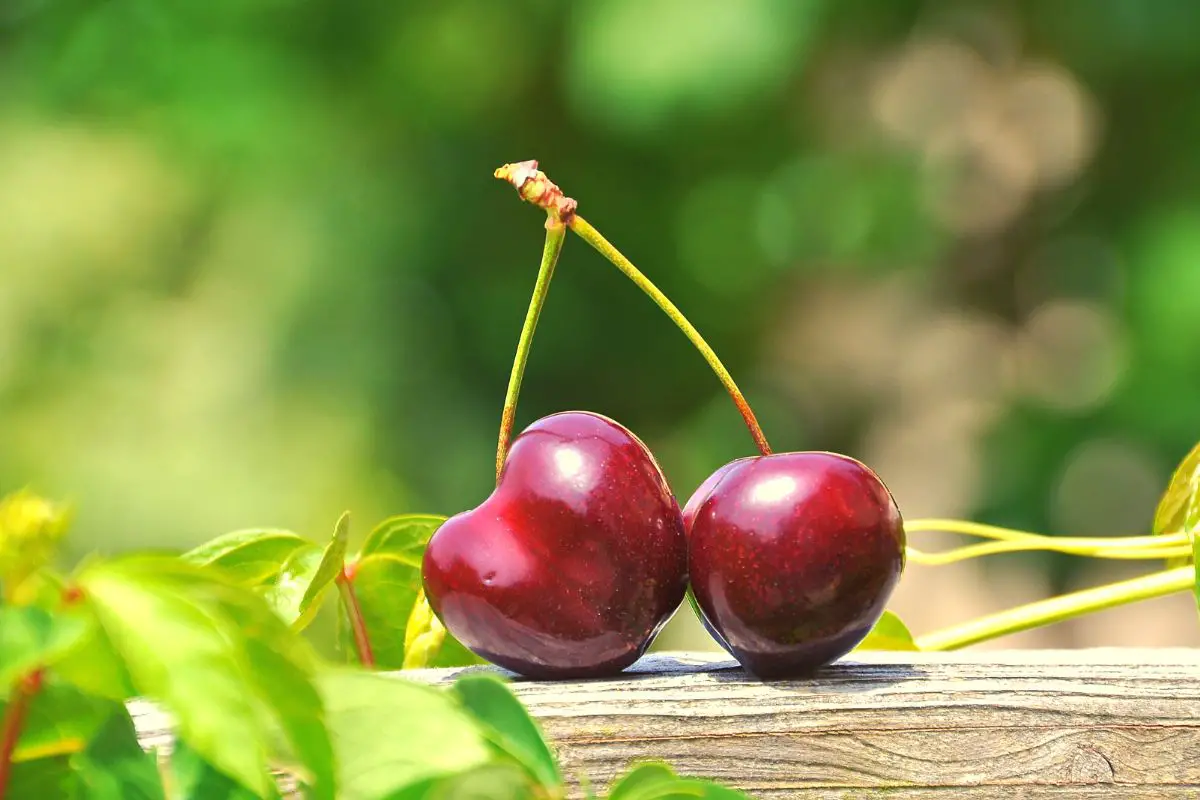Can You Swallow Cherry Pits | + All you need to know about Cyanide
Baked in a pie, atop granola, or whole on the stem — cherries are a delicious summertime delicacy. But for every yummy cherry, there’s also an inedible pit to deal with.
It’s pretty obvious that cherry pits aren’t for eating! They’re hard and have no flavor. So the pits are normally the first things to go (aside from the stems) when prepping cherries for baking or eating them fresh.
Yet we’ve all encountered a pit when biting into a table cherry. The accepted solution is to just spit the pit out. But what would happen if you instead swallowed it?
When swallowed whole, cherry pits rarely cause problems. They’ll pass through the digestive system and come right out the other end. However, chewed or broken cherry pits can release a dangerous chemical related to cyanide.
Related Article: Can you compost cherry pits?
Why Do Cherries Have Pits?
In the context of cherries as edible fruit, the cherry pits are little more than an inconvenience. In the botanical world, however, cherry pits are very important!
Cherries belong to a group of fruit called drupes. All drupes are defined by the presence of a hard pit, also known as a stone, surrounded by soft flesh. Other drupes you’re probably familiar with include peaches, apricots, and plums.

Many people refer to a cherry’s pit as its seed, but they are not one and the same. Rather, each pit contains a single cherry seed at its very center. The pit houses the actual seed until ideal conditions for germination are met.
The combination of edible flesh and nearly-unbreakable pit probably developed to aid in cherry tree reproduction. Cherries are obviously very attractive to animals (including ourselves!). When a cherry is eaten by a passing critter, the pit keeps the seed safe throughout the digestive process. The seed comes out of the other end still intact (ideally, further away from its parent tree than it started).
What Happens If You Swallow a Cherry Pit Whole?
Swallowing a cherry pit whole is actually the safest option!
A cherry pit’s outer shell is indigestible. When you swallow a whole cherry pit, it remains intact as it passes through your stomach, intestines, and eventually comes out in your stool.
The biggest risks associated with ingesting whole cherry pits are choking and intestinal blockage. These issues are more common in small children and pets than in adult humans.
Are Cherry Pits Poisonous to Humans?
Yes. But you shouldn’t panic if cherries are a regular part of your family’s diet!
Cherry pits contain a chemical compound called amygdalin. This compound exists between the hard outer shell of the pit and the inner seed. And, unless the pit is broken open via chewing, blending, or cutting, it stays there.
Amygdalin in its original state isn’t necessarily dangerous. The problem is that amygdalin can be converted into cyanide — one of the most infamous poisons in the natural world — when broken down by enzymes in the digestive system.

Again, it’s important to emphasize that amygdalin is INSIDE cherry pits. Our digestive systems won’t come into contact with the amygdalin as long as the cherry pit remains whole. This is why it’s much safer to swallow a cherry pit whole than to chew it.
In the past, amygdalin (sourced from apricot pits) was marketed as a supplement called B17. B17 is not a real B vitamin and does not offer any health benefits. This supplement is responsible for many amygdalin poisoning cases and should be avoided at all costs.
How Much Amygdalin Is in a Cherry Pit?
The amount of amygdalin per cherry pit varies widely by variety. Most table cherries contain less than 5 mg of amygdalin in each pit. Some types of sour cherries contain up to 65 mg per pit.
The average adult may experience symptoms after consuming 7 or more (chewed up) red cherry pits.
Symptoms of Cherry Pit Poisoning
Although poisoning from cherry pits is rare, it’s still important to be familiar with how digested amygdalin affects the body. Common symptoms of cyanide poisoning include:
- Nausea
- Dizziness
- Headaches
- Rapid or labored breathing
- Rapid heart rate
- Seizures
Because of their size, young children are the most at risk of poisoning via cherry pits. If you suspect a child has ingested several cherry pits, contact your local poison control helpline or a doctor immediately.
Tips for Eating Cherries Safely

I can’t stress enough that you shouldn’t be afraid of including cherries in your regular diet! But there are a few things you can do to reduce the chances of accidentally consuming a stray pit:
- Remove the pits of cherries before serving, especially if kids will be eating the fruit.
- Never place unpitted cherries in a blender or food processor. Carefully remove all pits before blending the remaining fruit.
- If you find an overlooked pit in a cherry, do not chew. Either spit the pit out or swallow it whole.
Frequently Asked Questions
Can You Compost Cherry Pits?
Yes, cherry pits can be composted! Just keep in mind that it can take several years for the hard shell to fully decompose.
There’s no need to worry about cherry pits (or other amygdalin-containing fruit) contaminating your compost pile. A few cherry pits won’t produce enough cyanide to harm a typical compost system. Plus, the pits probably won’t be exposed to the right enzymes to create cyanide in the first place.
Do Cherry Pits Contain Cyanide?
No, cherry pits do not contain actual cyanide. However, they do contain a chemical that releases cyanide molecules when exposed to digestive enzymes (such as those in the human stomach).

How Do You Stop Kids From Eating Cherry Pits?
To prevent kids from accidentally eating cherry pits, it’s best to remove the pits before serving the fruit as a snack. This is especially important for children who are too young to understand the danger of chewing cherry pits.
Of course, you won’t always be present to safely remove the pits from any cherries your kids eat. So you should teach that the pits are not edible and should be spat out as early as possible.
Are Cherry Pits Dangerous to Animals?
Yes. Just like with people, cherry pits can poison dogs, cats, and other animals when ingested. Keep cherries away from pets. Always securely dispose of cherry pits to prevent accidental ingestion.
Small animals can choke on swallowed cherry pits. Cherry pits, especially in large numbers, may also cause gastrointestinal blockages in pets.





